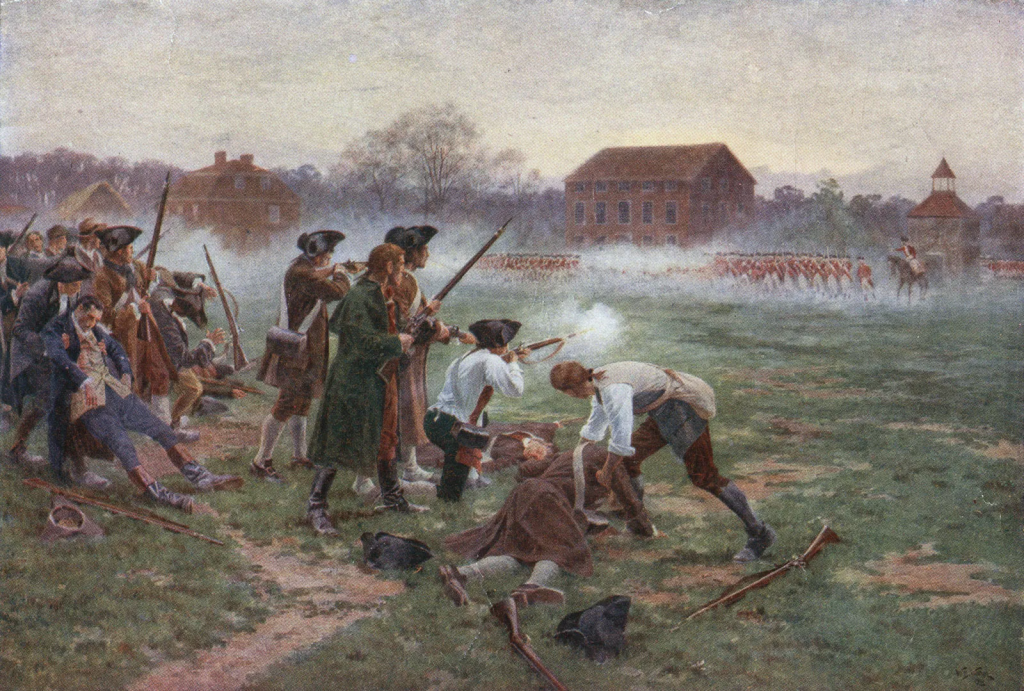The American Revolutionary War was never just about the thirteen colonies fighting against Britain; it was also a complex web of alliances, miscommunications, and unexpected friendships. The first military cooperation between the French and the Americans in 1778 was far from a smooth operation. It was plagued by delays, distrust, and a series of near-disastrous blunders. Yet, despite all the mishaps, this alliance would eventually shape the course of history.

A Delayed Arrival and a Frustrated Washington
When George Washington envisioned a perfect pincer attack against the British forces under General Henry Clinton, he counted on the timely arrival of the French fleet. However, the French admiral, the Comte d’Estaing, took a staggering 87 days to cross the Atlantic, turning what should have been a one-month journey into a grueling ordeal. By the time they reached North America, the chance to trap Clinton at the Battle of Monmouth had already slipped away.
Still eager to contribute, d’Estaing set his sights on New York, planning to assist Washington in besieging the British stronghold. But in yet another frustrating setback, he hesitated outside New York Harbor for weeks, fearing his ships might run aground. Washington, not known for outwardly displaying emotions, must have been pulling his hair out in exasperation.
The Disaster at Rhode Island
With the New York operation abandoned, d’Estaing decided to move north to Rhode Island, where American General John Sullivan was preparing to fight the British at Newport. Washington, desperate to make the alliance work, sent Generals Nathanael Greene and the young French nobleman Marquis de Lafayette to assist. However, cultural clashes and a lack of coordination doomed the effort before it even began. Sullivan, known for his stubbornness, clashed with the cautious d’Estaing. The Americans launched their attack prematurely without properly informing their French allies, leading to chaos on the battlefield.
As if things weren’t bad enough, a British fleet under Admiral Richard Howe suddenly appeared, threatening the unprepared French navy. Just as a full-scale naval battle seemed inevitable, a freak storm struck, damaging both fleets and forcing them to retreat. D’Estaing, his ships battered, decided to withdraw to Boston for repairs, leaving the Americans in Rhode Island feeling abandoned. The people of Boston, suspicious of the French, were outraged, seeing the retreat as cowardice rather than necessity. Only through the diplomatic efforts of Lafayette and Massachusetts Governor John Hancock was a full-blown riot against the French narrowly avoided.
Enter Lafayette: The Bridge Between Two Worlds
Washington knew that if the Franco-American alliance was going to work, someone had to act as the bridge between the two cultures. That person was none other than the 20-year-old Marquis de Lafayette. Unlike the slow-moving and indecisive d’Estaing, Lafayette was energetic, passionate, and completely devoted to the American cause. He had arrived in America seeking adventure but quickly became one of Washington’s most trusted officers.
Lafayette’s relationship with Washington was particularly fascinating. The stoic, reserved commander—who famously disliked physical contact—made an exception for the warm and affectionate Lafayette. Washington not only tolerated the young Frenchman’s enthusiasm but reciprocated, embracing him as a surrogate son. Their bond would prove crucial in maintaining French support for the war.
The Turning Point: Lafayette’s Diplomatic Mission
Realizing the need for stronger French commitment, Washington sent Lafayette back to France in late 1778 to secure additional aid. Upon arriving in Paris, Lafayette received a hero’s welcome. Even King Louis XVI, who had previously been hesitant about full-scale intervention, treated him as an expert on America. Working closely with Benjamin Franklin, Lafayette successfully lobbied for increased financial and military support. One minister even joked that it was fortunate Lafayette didn’t ask the king to sell Versailles, or he might have agreed!
His efforts led to the appointment of more competent French commanders, such as Admiral de Grasse and General Rochambeau. Crucially, he convinced Louis XVI to allow all French troops in North America to be placed under Washington’s command—at least in name—giving the American general the authority he needed to coordinate strategy effectively.
Lessons from a Rocky Beginning
The early Franco-American alliance was anything but smooth. Miscommunication, cultural differences, and hesitant leadership nearly turned it into a disaster. However, thanks to figures like Lafayette and Washington, the alliance endured and ultimately played a decisive role in the victory at Yorktown in 1781.
This story serves as a reminder that even the strongest alliances require patience, trust, and the right people to bridge the gaps. It also shows that history isn’t just shaped by grand battles but by personal relationships and diplomatic maneuvering. Without Lafayette’s charm and persistence, who knows how the war might have turned out?

No comments yet.